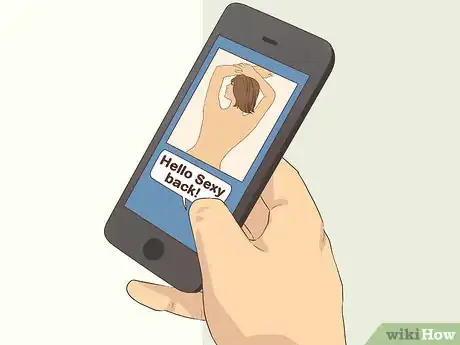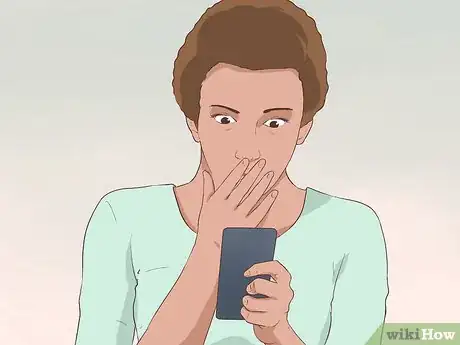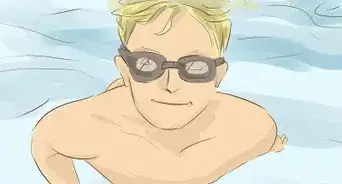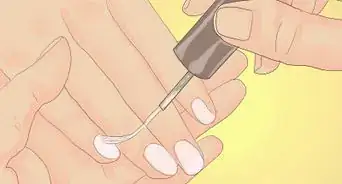X
wikiHow is a “wiki,” similar to Wikipedia, which means that many of our articles are co-written by multiple authors. To create this article, 28 people, some anonymous, worked to edit and improve it over time.
This article has been viewed 71,655 times.
Learn more...
So, you have found some pictures, and you are trying to figure out if the image is pornography or nudism? Read on to find out more about each one and what you can do.
Steps
Part 1
Part 1 of 2:
Understanding Pornography
-
1Recognize and report child pornography. Any images that show a child under the legal age in your country fully unclothed or partially clothed, in a sexual manner or for a sexual purpose, or acting out sexually for any purpose, are called child pornography and are illegal. If you find illegal images of children, whether on the internet or not, you need to contact the police. Child pornography is illegal because it is a crime that harms all children. It also distorts people's views on what is acceptable and what isn't.
- It is a widespread misconception that ALL images of a minor child naked constitute child pornography. For instance, it is legal for parents to take innocent pictures of their children in the bathtub, or innocently playing around the house or back yard naked; nudist magazines often feature pictures of nudist families with children; and children can even pose nude for bona-fide artistic purposes (e.g. "Bodies and Souls, The Century Project" a photography book by Frank Cordelle), provided that there is no lewd or predatory intent, and parental consent and supervision is given. It's also clearly not a crime to paint pictures of little cupids or cherubs naked.
- However, it is true that all images of a child engaged in sexual activity are child pornography and are illegal without exception.
-
2Understand about other types of pornography. The most common type of pornography is images or videos of two or more people engaging in sexual contact. These images and videos are only for people who are over the legal age to watch. People typically view pornography for reasons including sexual arousal.
-
3Look at aspects of the picture such as posture, lighting or setting. In pornographic pictures, the photographer often uses subtle moves to the viewer such as adjusting the lighting or the scenery in a sexually provocative way. For example, a harsh garish glow will be used, or the subject will be posed on a bed or in a bedroom. Often, the subject will also take a provocative pose, the camera will be focussed on a sensitive body part, or the subject will have a lascivious, luring facial expression, or be wearing lipstick, even if they're not explicitly taking part in sexual activity. Nudist photos will invariably lack all of these aspects, and instead portray people simply interacting and living their lives in a natural way.
- One fairly reliable test to determine whether a picture is pornography or nudism is to ask yourself, "Would I want my young child to see that?" If the answer is, "Sure, why not," then the picture likely falls under the nudism category. If the answer is, "Certainly not!" then the picture is almost certainly pornography.
-
4Understand what "sexting" is. Sexting is the sharing of sexually explicit photos, typically done using mobile phones, but it can be done using any type of device that allows you to take and send pictures to another device. There are many reasons why people might send photos like this to each other. They might join in, because they think 'everyone else is doing it', or it might be a way of exploring their sexual identity. It might also be a way that they meet new people online.
- Sexting is illegal if:
- A young person takes an explicit photo or video (of themselves or a friend), or;
- Anyone possessing explicit images of a child, or sharing an explicit image of a child.
- Sexting isn't a good idea because you can't be sure that the person won't show anyone else your image, even if you think you trust them.
- Sexting is illegal if:
Part 2
Part 2 of 2:
Understanding Nudism
-
1Find out more about nudism. Nudism is when a person chooses to be unclothed for reasons that don't typically include sexual arousal/contact. Nudism is the act of being naked, whereas naturism is lifestyle embraced for reasons such as nature, environment, comfort, and lots of other things. Most nudists (or naturists) don't choose to be unclothed for sexual reasons, and this is the prime difference between nudity and pornography.
-
2Know that nudism isn't a reason to send explicit images to others without their consent. Even if you don't think the image/video is explicit, you should always check with the person on the receiving end of the media before sending anything that could possibly be classed as inappropriate. Nudism is not an excuse to cross others boundaries.
- To avoid any misunderstanding, you could first explain to the person that you're a nudist, and explain that nudism is not a sexual lifestyle. Introducing yourself as a nudist should not involve sending a picture.
-
3Talk to people about nudism. Keep the lines of communication open, even if there isn't a problem, because if one occurs then it's easier to talk about it. Keep the general rules of pornography in mind (i.e. don't send anything illegal; if you receive something of that nature or find it on the internet, always tell someone you trust for safety reasons).
Community Q&A
-
QuestionWhat should I do if I find some pornographic pictures of someone I think might be legal age, but I'm not sure?
 MusicIsEverywhereCommunity AnswerIt's better to be safe than sorry. Report the photos to the police and let them take the course of action from there. Photos of legal-age adults usually have a disclaimer saying that the subjects are of age. If there is no such disclaimer and you're not sure of the subject's age, it's better to assume it's child pornography until you know for sure otherwise.
MusicIsEverywhereCommunity AnswerIt's better to be safe than sorry. Report the photos to the police and let them take the course of action from there. Photos of legal-age adults usually have a disclaimer saying that the subjects are of age. If there is no such disclaimer and you're not sure of the subject's age, it's better to assume it's child pornography until you know for sure otherwise. -
QuestionI thought any depiction of a minor child naked was child pornography. Why does this article say that's a misconception?
 MusicIsEverywhereCommunity AnswerThat probably depends on your country or jurisdiction. However, criminal law in the US and Canada specifies "LASCIVIOUS exhibition of the genitals or pubic area" and "dominant characteristic FOR A SEXUAL PURPOSE of a sexual organ or anal region" respectively. Still, there may be other countries where any depiction of a minor child naked is child pornography without exception. There have even been a few cases of law enforcement, mainly in the US, abusing the law and arresting parents who take innocent pictures of their children in the bathtub or playing naked, so perhaps using a phone or digital camera, and keeping such pictures in the family only would be safe.
MusicIsEverywhereCommunity AnswerThat probably depends on your country or jurisdiction. However, criminal law in the US and Canada specifies "LASCIVIOUS exhibition of the genitals or pubic area" and "dominant characteristic FOR A SEXUAL PURPOSE of a sexual organ or anal region" respectively. Still, there may be other countries where any depiction of a minor child naked is child pornography without exception. There have even been a few cases of law enforcement, mainly in the US, abusing the law and arresting parents who take innocent pictures of their children in the bathtub or playing naked, so perhaps using a phone or digital camera, and keeping such pictures in the family only would be safe. -
QuestionAre pictures on the internet of a nudist camp of children against the law?
 MusicIsEverywhereCommunity AnswerGenerally, nudist pictures of children are not against the law provided that they're for the purpose of demonstrating nudism or educating the public about nudism. However, if an actual pedophile snuck a camera into a nudist camp and snapped pictures of the nude children there, they would be charged with voyeurism at best and child pornography at worst.
MusicIsEverywhereCommunity AnswerGenerally, nudist pictures of children are not against the law provided that they're for the purpose of demonstrating nudism or educating the public about nudism. However, if an actual pedophile snuck a camera into a nudist camp and snapped pictures of the nude children there, they would be charged with voyeurism at best and child pornography at worst.
References
- https://en.m.wikipedia.org/wiki/Naturism - research source













-Step-16-Version-2.webp)



-Step-16-Version-2.webp)














































